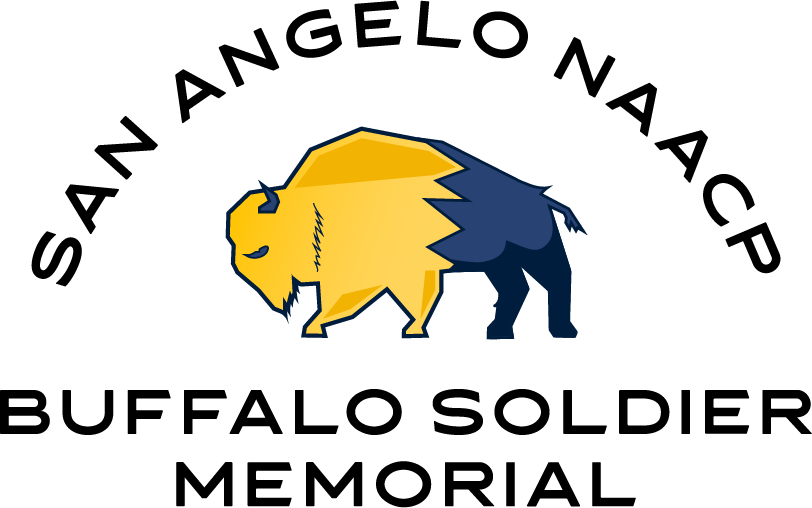
Around 1867, the US Military established a fort here in Santa Angela in an area that was just being established and later known as San Angelo. The fort became known as Fort Concho- located off the Concho River.
Soon after, these regiments arrived at Fort Concho and served here from 1867-1888. There are a few ideas and beliefs about how these soldiers became known as Buffalo Soldiers. Some believe the Plains Native Americans gave them the name because they fought ferociously like the buffalo. Others say that the hair of the Black soldiers reminded the Native Americans of the curly hair of the Buffalo. While neither has been accepted as the true reason for the name, it has been widely accepted as the “nickname” of these soldiers and is used when talking about them and writing and recording their history.
This project is a result of a vision by Sherley L. Spears to honor the legacy of the Black regiments who were established by Congress July 28, 1866.
In 1866, the U. S. Congress established an opportunity for Black men to fight in the U.S. Army. Black men who survived the Civil war or who believed that being a part of these regiments offered promise for their new found freedom.
The U.S. Congress established the 9th and 10th Cavalry and the 38th, 39th, 40th and 41st Infantry of Black men who would help the government in various campaigns and activities. Eventually, the government combined the Infantry regiments into two – the 24th and 25th Infantry. These regiments all served west of the Mississippi as part of the effort to settle the western states where greater opportunities were promised.
These brave men compiled a distinguished record, with 18 Buffalo Soldiers awarded the Medal of Honor. This exceptional performance helped to overcome resistance to the idea of black Army officers and opened the opportunity for other Black soldiers to be promoted to positions of leadership.
These regiments performed many duties, and became the first park rangers, as America established national parks across the west. They also built roads, protected the parks, protected mail deliveries and eventually produced the first Superintendent of the National Parks, General Charles Young.
Despite the service of these soldiers, little has been done to honor and recognize them in various locations throughout America. The Buffalo Soldier Memorial is the first memorial established in Texas to give such recognition.
Having learned more about the service of these men at Fort Concho, Sherley L. Spears believes she was given a vision to create a place of honor for these men. She worked with various community leaders, historians and living history advisors to create a team to build a special place of honor. Spears offered the San Angelo NAACP an opportunity to have naming rights, and named it in their honor as the San Angelo NAACP Buffalo Soldier Memorial. At the time, Ms. Spears was the President of the San Angelo NAACP, having served the branch for four years.
To create the memorial, it was necessary to create a rendering and find a location on which to create the memorial. Spears worked with a local architect group, KFW Architects, to create a rendering that captured her vision of strength and honor. The city of San Angelo unanimously voted and approved the location at a public park known as El Paseo de Santa Angela, which is located directly across the street from the Fort Concho Parade ground. This space was once part of the original fort acreage.
The Buffalo Soldier Memorial in the Paseo de Santa Angela Park will finally honor the legacy of those courageous men and give special recognition to many who served at Fort Concho and the four who are buried at Fairmount and Delta Memorial Cemeteries. in San Angelo, Texas. The San Angelo NAACP Buffalo Soldier Memorial establishes a place of honor for the many men and women of the U.S. Army who have not been given their proper recognition in United States history and the United States Army.


